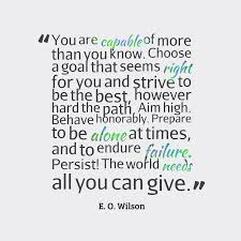Have you ever felt incapable? Think about that class you are struggling with. Think about that job that you want but the required skill set seem like a faraway dream. Keep all this in mind while you read about our female engineer of the month: Emily Warren Roebling.
Emily Roebling was not the typical engineer, but that is exactly the beauty of her story. Emily was born on September 23rd, 1843 to an upper-middle class family of 12. She was the 11th child. At the age of 15, she was enrolled at Georgetown visitation convent in Washington DC. There, she gained knowledge in various topics like history, geography, algebra, grammar, piano and much more. Among all her siblings, she had a unique relationship with her elder brother; Gouverneur Kemble Warren. Gouverneur Kemble was a general in the United States Army. A simple visit to see her brother at the army camp he served at, would begin Emily’s story.
In 1864, while visiting her brother; General Warren, Emily met Washington Roebling. Washington had served under Kemble during the Civil War. Their relationship took off from there. January 18th, just 11 months later, Emily and Washington were married. 2 years after they said ‘I do’, John Roebling (Emily’s father in-law) sent the both of them to Europe to learn more about caissons disease (also known as the bends). This was a disease popular among bridge builders. John Roebling had begun a monumental project: a bridge over New York’s East River that would connect Brooklyn to New York. John didn’t see this dream of his come to reality. A few years later, John died of tetanus. To continue his father’s legacy, Washington took up the project. However, in January of 1872 Washington fell into “the bends.” His health declined drastically leaving him bed ridden.
In 1864, while visiting her brother; General Warren, Emily met Washington Roebling. Washington had served under Kemble during the Civil War. Their relationship took off from there. January 18th, just 11 months later, Emily and Washington were married. 2 years after they said ‘I do’, John Roebling (Emily’s father in-law) sent the both of them to Europe to learn more about caissons disease (also known as the bends). This was a disease popular among bridge builders. John Roebling had begun a monumental project: a bridge over New York’s East River that would connect Brooklyn to New York. John didn’t see this dream of his come to reality. A few years later, John died of tetanus. To continue his father’s legacy, Washington took up the project. However, in January of 1872 Washington fell into “the bends.” His health declined drastically leaving him bed ridden.
Confined to his sickroom, Washington lost hope in continuing this project. Little did he know that the woman he married was an epitome of hard work and brilliance. Seeing how poor health had affected her husband’s ability to work as the chief engineer, Emily stood up to the plate. She was a mediator between her husband and the laborers working on the bridge. She took the initiative to learn more about materials, stress analysis, cable construction and calculation of catenary curves. She was on site every day to ensure things were going as planned and relayed the updates back to her husband. Eventually, she became the backbone of the project. In fact, she became so good that people thought she was the intelligence behind the bridge in the first place.
In 1883, the Brooklyn Bridge opened, thanks to Emily’s persistence. Well-deserved praise was sung to Emily at the opening ceremony. Abram Hewit called the bridge a “an everlasting monument to the self-sacrificing devotion of a woman and of her capacity for that higher education from which she has been too long disbarred.” Emily Warren will forever be remembered with all that is admired in human nature and the art of construction, Hewit acclaimed.
In 1883, the Brooklyn Bridge opened, thanks to Emily’s persistence. Well-deserved praise was sung to Emily at the opening ceremony. Abram Hewit called the bridge a “an everlasting monument to the self-sacrificing devotion of a woman and of her capacity for that higher education from which she has been too long disbarred.” Emily Warren will forever be remembered with all that is admired in human nature and the art of construction, Hewit acclaimed.
This is Emily’s story. Her path to greatness was filled with a lot of downs, but that did not quench her fire. When it seemed like things were going downhill, she fought even harder. It’s that time of the semester; Mid-terms are kicking in, the assignments are piling up, registration for classes have begun, the anxiety and fear keeps turning up a notch. Nevertheless, it is time for you to step up to the plate and not crawl under your bed. You are capable.




